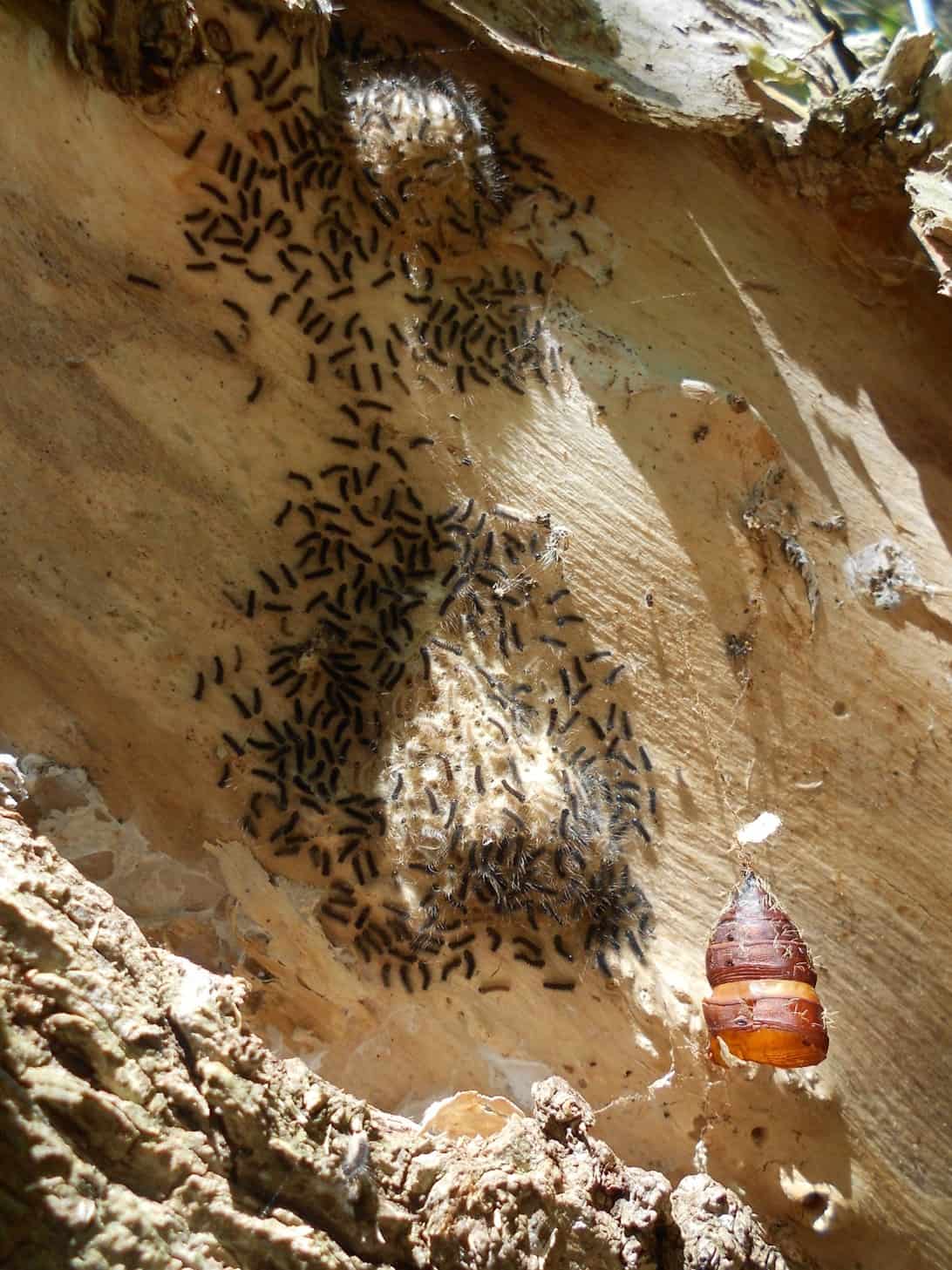If you have trees on your property, you’re likely familiar with the invasive LDD moth (also known as gypsy moth*). This time of year, we start to see a lot of LDD moth caterpillars emerge from their egg masses.
We’re currently in the third year of a population boom for these invasive forest pests and it’s shaping up to be another year of hungry caterpillars. The Ministry of Natural Resources and Forestry (MNRF) has forecasted that we can expect severe defoliation. Learn more about MNRF’s forecast and other related information.

How to protect your trees:
There are a few steps you can take to protect your trees and shrubs:
- Scrape egg masses off into soap water.
- Wrap tree trunks with double-sided sticky tape to catch caterpillars.
- As caterpillars grow, wrap a wide strip of folded burlap to create a place for caterpillars to hide. Monitor the burlap and remove caterpillars.
Watch this video from the City of Grand Rapids to learn how to wrap a tree with sticky tape.
Watch this video from the City of Toronto for more information on how to wrap burlap.
In forests, LDD moths rarely cause large-scale damage and management programs are expensive. There is a role for insect outbreaks in forest ecology. They create habitat for wildlife that use tree cavities and eat decaying trees, such as woodpeckers and the insects they feed on. Small gaps in the forest caused by a few dead trees can also make room for new plants and trees to grow.
If you have concerns about LDD moths, consult a local tree service company to assess the impacts of your forest’s health and to determine if action is required. Learn more.
Here’s what CVC is doing:
Credit Valley Conservation is in the process of developing an Invasive Species Strategy that recommends a comprehensive pest management framework to identify our priority invasive species and priority sites for monitoring. We will be developing an LDD moth monitoring program. Once this program is finalized, we’ll begin active management of LDD moths at our conservation areas.
Here’s what partner municipalities are doing for their public spaces and street trees:
- City of Brampton: using a variety of practices including egg mass scraping, tree band installations, and ground sprays in priority areas. Learn more.
- City of Mississauga: continuing their integrated pest management through a combination of egg mass scraping, tree injections and ground sprays in priority areas. Learn more.
- Town of Caledon: completing egg mass scraping and ground sprays in priority areas. Learn more.
Review more information on LDD moth control options and frequently asked questions. If you have specific questions regarding this invasive pest or other invasive species, connect with us at [email protected]
*We are transitioning away from the use of “gypsy moth” and will be using the acronym for the scientific name “LDD” going forward.
By: Freyja Whitten, Program Manager, Terrestrial Restoration









